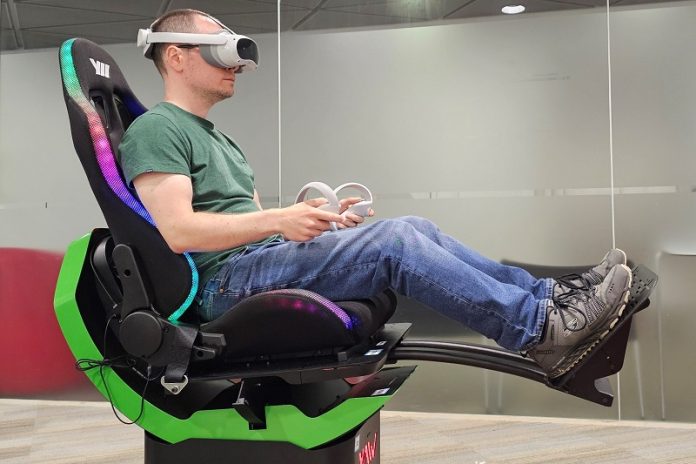
A new study has shown that virtual reality (VR) can fool your sense of movement much more than we thought—without making you feel dizzy or sick.
Researchers from the University of Glasgow discovered that people wearing VR headsets can be made to feel like they are spinning, speeding up, or even turning in the opposite direction from reality, all while staying completely comfortable.
This breakthrough could change how VR is used in games, simulators, theme parks, and even during car rides.
The study, led by Dr. Graham Wilson from the university’s School of Computing Science, found that when people are not actively controlling their movement—such as when sitting in a chair or riding in a car—they can be tricked into feeling motion that isn’t really happening.
Even small turns or slow speeds can feel like fast, dramatic motion in VR, and users don’t seem to notice or feel unwell.
In one part of the study, participants sat in a motorized chair and played a VR shooting game while the chair slowly rotated.
The VR headset, however, showed much larger movements. A real-life 90-degree turn could be made to feel like a full 360-degree spin.
The researchers used a technique called “rotational gain” to gradually increase this effect.
Surprisingly, users didn’t notice the mismatch between what they saw and what their body felt—even when the movement was exaggerated by up to 1,700%. That means a small 10-degree turn in real life could feel like a huge 170-degree turn in the VR world.
The team also tested what happened when the virtual motion went in the opposite direction from real motion. Even then, most people didn’t notice the trick—especially if they were focused on a game or task.
When people were just sitting still, they were slightly more aware of the difference, but still not much.
In the final part of the study, volunteers wore VR headsets while riding in a car through city streets.
Once again, they played a game and their virtual motion was changed using “translational gain”—which made their VR movement feel up to 7.5 times faster than their real-world speed. In this setting, people had no idea how fast or in which direction they were actually moving in the real world.
Dr. Wilson explained that these results show just how flexible our brains can be in passive VR situations. When people aren’t in control of their movement, their sense of motion can be easily fooled.
This could lead to more immersive and exciting VR experiences without the usual risk of motion sickness. For example, simple motorized chairs at home could make VR feel more thrilling, even with limited space or movement.
Professor Stephen Brewster, another author of the study, said the research helps open new doors for passive VR experiences, like those in theme parks or during travel. The study provides suggestions for VR designers to make the most of this new insight and build better, more enjoyable virtual experiences.
The research paper, titled The Spin Doctor, will be presented at the CHI 2025 conference in Yokohama, Japan, later this month. The team plans to continue studying how long people can tolerate these tricks and how other types of movement might affect our sense of reality.
Source: University of Glasgow.



